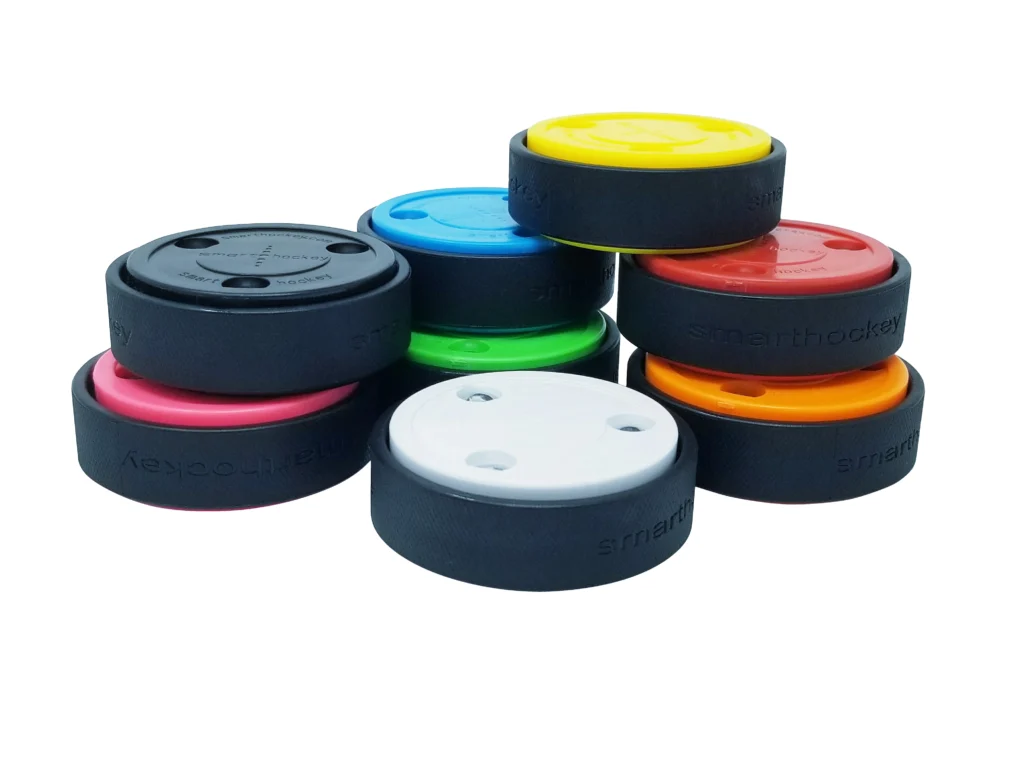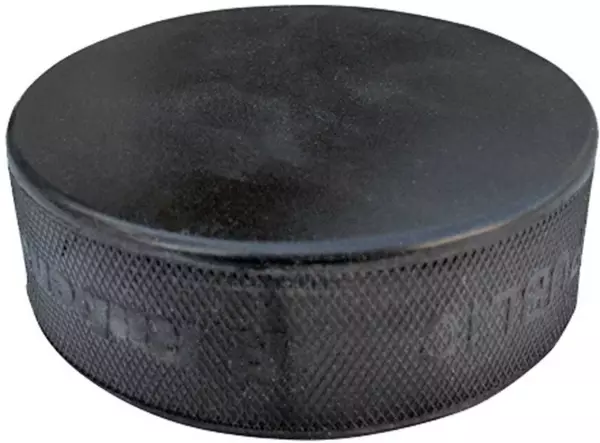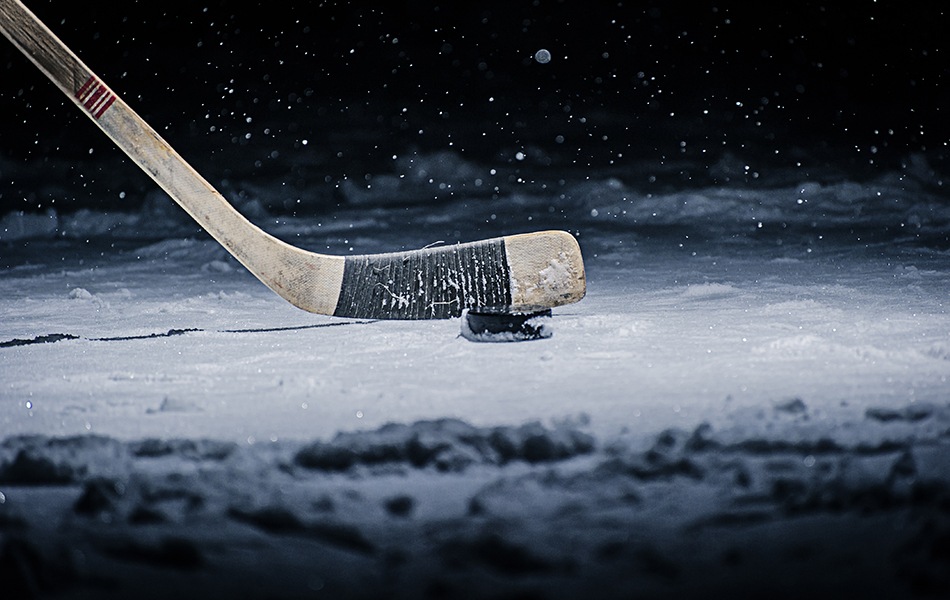Known as one of the ‘Big Four’ sports, ice hockey holds a significant position in the sports landscape of the United States. Its blend of speed, physicality, and unique playing surface on ice sets it apart from other popular sports. The game’s equipment, particularly the iconic puck, adds to its distinctiveness.
Unlike any other sport, ice hockey features this disk-shaped puck that raises curiosity about its origins, dimensions, materials, and colors. To delve deeper into this intriguing aspect, we have compiled comprehensive information covering not only the sizes and weights of hockey pucks but also the materials used in their construction and the remarkable speeds they reach on the icy rink.
Explore the nuances of this beloved sport through the lens of its essential component – the hockey puck.
History of hockey pucks

A hockey puck, an essential component of ice hockey equipment, is a small, flat, circular disc designed to glide effortlessly across the icy rink. The intriguing origins of the hockey puck’s name have sparked various theories.
One popular belief links its name to a character from William Shakespeare’s ‘A Midsummer Night’s Dream’ – Puck, known for swift and unpredictable movements akin to the puck itself. Another theory traces the term back to an old Irish word, ‘poc’, meaning ‘to strike’, possibly originating from Hurling, a traditional Gaelic sport.
In the early 1800s, hockey pucks were crafted from wood in a round shape. As the sport evolved, pucks transitioned into flat squares made of wood or rubber during the 1870s. Interestingly, players began using cut lacrosse balls as makeshift pucks by utilizing the middle third of the ball.
Throughout the 1900s, these makeshift solutions progressed into the rubber discs widely used in modern ice hockey. Today’s hockey pucks are meticulously designed to enhance speed and smooth movement on the ice, reflecting the evolution of this essential element in the sport.
Hockey puck dimensions

In the pro leagues, like the National Hockey League (NHL), they’re the ones who decide how big a hockey puck should be. So, the official NHL puck size is the same as what’s used in high school, college, and other pro hockey groups. That means, from high school all the way to the NHL, the hockey puck sizes stay consistent.
Hockey puck size
The NHL says hockey pucks need to be 3 inches in diameter and 1 inch thick. They don’t mention the circumference in the rulebook, but if the diameter is 3 inches, the puck’s circumference should be around 9.4 inches.
Hockey puck weight
The official weight of an NHL puck falls between 5.5oz to 6oz (156g – 170g), which stays consistent across all adult ice hockey levels, even in college games and events like the Olympics.
Training pucks for hockey tend to be a bit heavier at around 10oz (283g). This extra weight helps players work on their hand and stick speed, enabling them to pack more power into their shots.
Now, when it comes to youth hockey pucks, they’re the same size as the adult ones but a tad lighter at 4oz (113g). This lighter weight gives young players a chance to hone their stickhandling skills and get comfortable with the puck on their stick.
What is a hockey puck made of?

Regulation hockey pucks, the unsung heroes of the game! Crafted from vulcanized rubber through a fiery dance of high pressures and scorching temperatures, up to a sizzling 240°F (140°C). This transformative process turns the rubber from a gooey mess to a sturdy puck that holds its shape, making it tougher and longer-lasting.
But wait, there’s more! Before reaching its icy destiny, the puck goes through a metal mold makeover, followed by a steamy session to set its form. Then, it’s vulcanization time! Harden up, little puck! After a trim and a quality check, it gets dolled up with a slick paint job, textured edges for stick control, or even a cool logo. Game on!
What color should a hockey puck be?
NHL official game pucks and those used in other adult matches are usually black, making them stand out on the ice. But you’ll find training pucks in orange and youth hockey pucks in blue. As long as it’s easy to spot against the ice, there’s no strict rule on puck colors – have fun with it!
Hockey puck maintenance
Just like any other sports equipment, proper maintenance of your ice hockey puck is crucial for optimal performance on the ice. To keep your puck in top shape, it is advisable to clean it thoroughly and inspect for any signs of wear and tear after each game or practice session. By removing dirt, debris, and excess moisture from the puck’s surface, you can ensure its smooth glide and longevity, ultimately enhancing your gameplay experience.
When cleaning your hockey puck, refrain from using harsh chemicals or strong cleaning agents. Instead, opt for a gentle solution of water mixed with mild dish soap to preserve the puck’s integrity. After cleaning, allow the puck to air dry completely before considering storage options. Storing the ice hockey puck in a cooler environment can further help maintain its optimal performance by ensuring consistent glide and stability on the ice, reducing the risk of unwanted bouncing or flipping during gameplay.
Hockey puck FAQs
How fast does a hockey puck travel?
Hockey pucks, specifically designed for high-speed movement across the ice, can achieve remarkable velocities of up to 100mph! Skilled ice hockey players typically unleash shots ranging between 80mph and 90mph, with the potential for even greater speeds using the ‘slapshot’ technique, aiming to strike the puck with maximum force.
One of the most electrifying moments in ice hockey history was when Alexander Riazantsev set a jaw-dropping record by launching the puck at an astounding 114.1mph during the KHL (Kontinental Hockey League) All-Star game in 2012.
Not to be outdone, Zdeno Chara holds the NHL record with an impressive shot speed of 108.8 miles per hour, achieved during the 2012 NHL All-Star skills competition. These remarkable feats showcase the incredible power and precision involved in ice hockey’s fastest shots.
Are hockey pucks frozen before games?
Did you know that in the NHL, they freeze the hockey pucks before games? It’s the home team’s job to keep them frozen and transfer 15 pucks to the penalty box cooler before each period. They switch out each puck with a new frozen one every two minutes of play, using around 25-30 pucks per game.
Freezing the pucks helps them glide smoothly on the ice and prevents bouncing or flipping. Now that you’ve checked out our hockey puck guide, why not take a look at our awesome range of FORZA hockey equipment?
At the hockey nation, we’ve got top-quality gear for players of all ages and skill levels, from regulation size pucks to professional goals, training tools like speed chutes, and everything you need for game day. Check out our selection and up your hockey game!
Bottom line
Understanding the physical attributes and maintenance of hockey pucks not only enriches your knowledge of the sport but also enhances your on-ice performance. The preciseness in dimensions and weight across different levels of play ensures consistency, allowing players to fine-tune their skills to a uniform standard.
Furthermore, the meticulous production process of pucks underscores the sport’s commitment to quality and durability. Remember, whether you’re a budding enthusiast or a seasoned pro, taking care of your hockey puck is as crucial as mastering the slapshot. With this complete guide, you’re now equipped to hit the ice with confidence, armed with a deeper appreciation for one of hockey’s key components.
